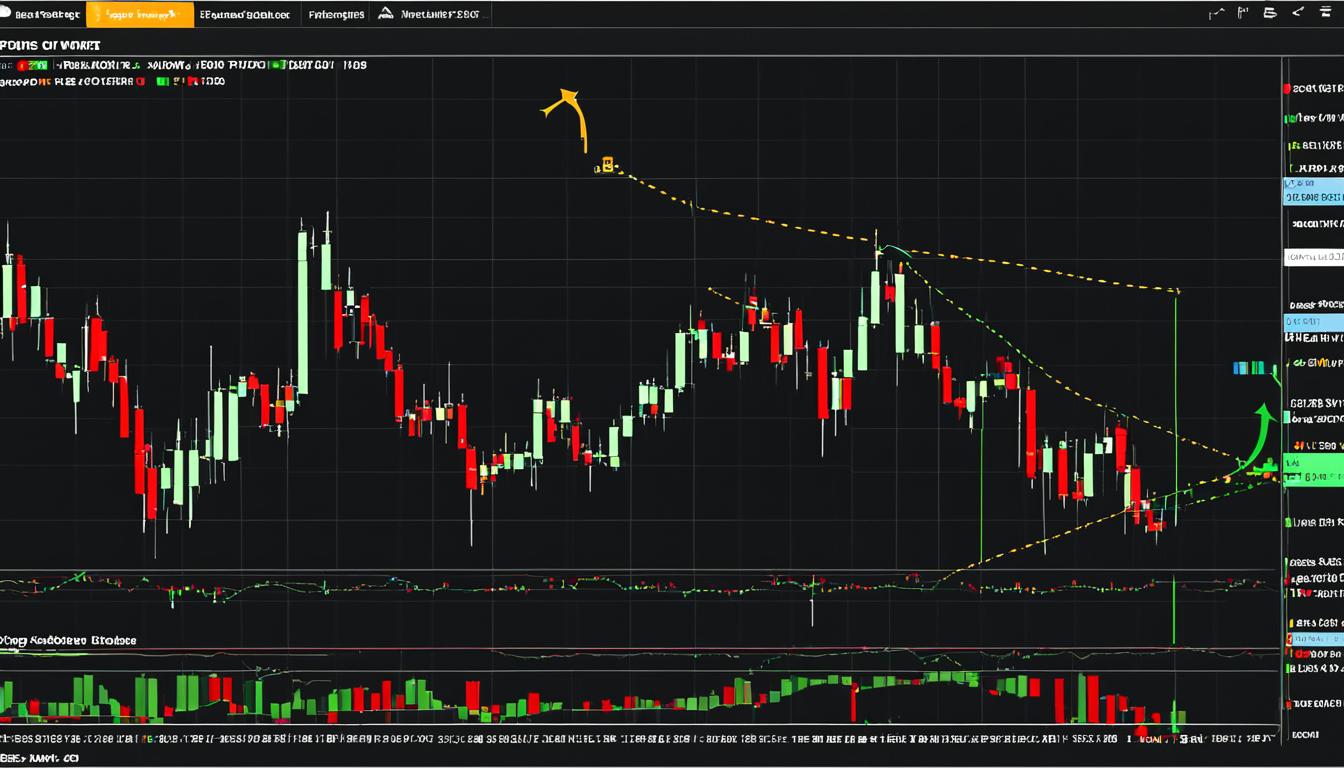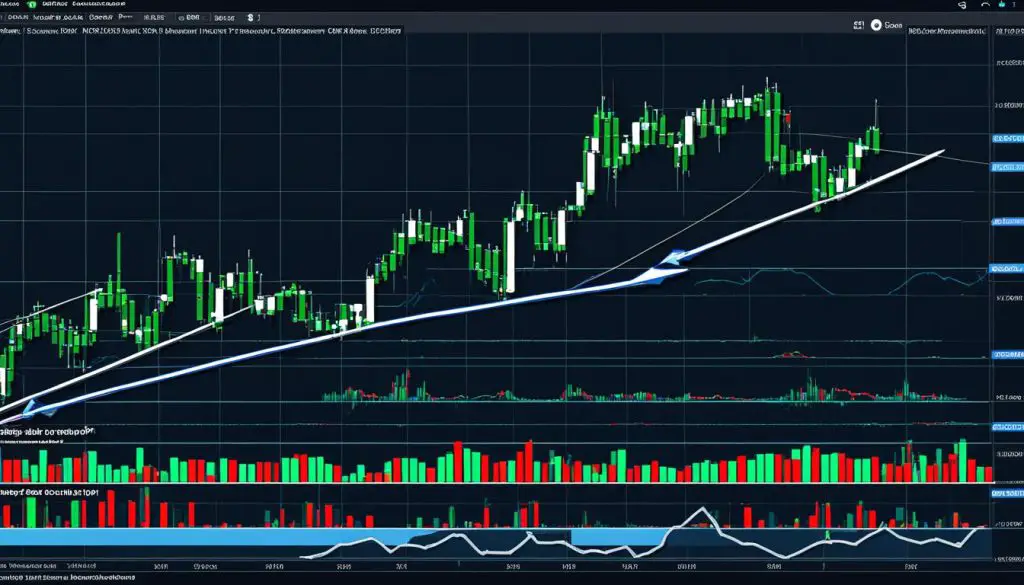Navigate the volatile waves of the stock market with a proven compass—the pivot point indicator. Used by seasoned traders, this dynamic tool anchors your pivot trading strategy, offering a clear view through the murky waters of price movements. Whether you’re day trading blue-chip stocks or speculating on currency pairs, incorporating the precision of pivot point trading into your methodology can enhance decision-making and bolster your confidence on the trading floor.
Grasping the essence of pivot stock analysis empowers traders to preempt market trends and pivot accordingly. The essence of a pivot point strategy lies in its predictive capacity and mathematical precision, built on the solid foundation of historical price points. By distinguishing key moments when to enter or exit positions, pivot points serve as a beacon, guiding traders towards potential profits in a seesawing market.
Demystifying Pivot Points in Stock Trading
As a fundamental tool employed by traders, understanding stock pivot points is crucial for making informed decisions in the fast-paced world of stock trading. This section delves into the origin, calculation, and significance of pivot point levels, shaping strategies that have stood the test of time.
Origin and History of Pivot Points
Rooted deeply in the trading pits of the past, the pivot point history began with floor traders who sought a reliable method to predict market trends. These innovative traders used simple mathematics to identify key price levels, which remain a cornerstone in technical analysis today. Their legacy has provided a framework for modern traders to anticipate market movements and make timely decisions in the stock market.
Understanding the Calculation and Application
To master the pivot point calculation, one must appreciate the simplicity and efficacy of the formula. By taking the high, low, and closing prices of the previous trading session, traders can determine the central pivot point. This pivotal figure acts as a starting point for calculating additional levels of support and resistance, which are instrumental in plotting daily trading strategies.
The Significance of Seven Key Pivot Levels
The robustness of the pivot point system is evident through the seven key pivot levels charted in this method. Ranging from basic support and resistance to more advanced projections, these levels provide traders with a comprehensive topography of potential price movements. Executing trades around these pivot levels has become an exercise of precision, as individuals all over the globe rely on this information daily.
Stock pivot points offer a dynamic perspective on market forces, encapsulating the ongoing battle between bullish and bearish mentalities. The analysis of these points enables traders to cut through the noise and focus on the critical junctures where market direction is often decided. In the end, the real art lies not only in the pivot point calculation but also in its application, making it an indispensable component of the trader’s toolkit.
Strategies for Effective Pivot Point Trading
Utilizing pivot point support and resistance calculation is a foundational aspect of developing a pivot trading strategy. These strategies hinge on calculations of pivot points based on the previous day’s market data and are integral in identifying potential price movements and trend reversals. The application of pivot point techniques within these strategies allows for the setting of specific price targets and stop-loss orders, fostering discipline and control amongst traders.
Day traders often rely on these points to determine precise entry and exit points, capitalizing on market volatility. Below is a breakdown of how pivot levels are commonly used in trading:
- The main pivot point (P) serves as the primary gauge for the sentiment for the day; prices above this point suggest a bullish market, while prices below indicate a bearish trend.
- Resistance levels (R1, R2, R3) are plotted above the main pivot point and can signal potential sell points or areas to place stop-loss orders.
- Conversely, the support levels (S1, S2, S3) are set below the pivot point, providing potential buy points or signals for stop-loss orders.
To illustrate the practical use of pivot points within a trading day, consider the following complete table which delineates hypothetical pivot levels for a stock:
| Pivot Level | Price | Purpose |
|---|---|---|
| R3 | $133.40 | Strong Resistance, Could Indicate Overbought Condition |
| R2 | $131.70 | Secondary Resistance, Possible Profit-Booking Zone |
| R1 | $130.25 | First Resistance Level, Ideal to Consider Stop-loss for Longs |
| P | $128.50 | Main Pivot Point, Crucial for Sentiment Analysis |
| S1 | $127.10 | Primary Support Level, Could Trigger Buying |
| S2 | $125.30 | Secondary Support, Considered a Strong Buy Signal if Not Breached |
| S3 | $123.60 | Deep Support, often Indicates Oversold Condition |
Being adept with pivot point analysis allows traders to enhance their trading decisions, serving as a robust foundation for a consistent pivot trading strategy. Moreover, as these points are visible to all market participants, it creates a common language amongst traders, providing cues for potential market movements and enabling traders to act with confidence.
Enhancing Day Trading with Pivot Stock Analysis
For active day traders, understanding and utilizing pivot point charts is an essential skill. Pivot point day trading centers on using these dynamic levels to pinpoint entry points, identify stop loss levels, and set target prices within a day’s session. It’s a technique that’s become integral for professional trading, combining mathematical precision with a clear view of market trends.
Optimal Time Frames for Pivot Traders
The optimal time frame for employing pivot point charts is debatable among professionals, but the consensus skews towards shorter spans. One-minute to 30-minute charts are commonly used, reflecting the urgency and speed of day trading. Here, daily pivot points provide actionable insights tailored to the swift changes and fluctuations within a single trading session.
Accuracy and Popularity Among Professional Day Traders
Professional traders often gravitate towards pivot point day trading due to the method’s noted accuracy. The widespread adoption of these indicators can sometimes lead to self-fulfilling market moves as large segments of the trading community make decisions based on common support and resistance levels identified by pivot points.
| Time Frame | Advantages | Considerations |
|---|---|---|
| 1-Minute Chart | Allows for high-frequency trading and quick decisions | Can be overwhelming due to the amount of market noise |
| 5-Minute Chart | Balances speed with a clearer view of trends | Requires rapid response to movement |
| 15-Minute Chart | Provides a broader perspective for intraday trends | May miss out on short-lived trading opportunities |
| 30-Minute Chart | Ideal for traders who desire more deliberation time | Less suited for high-frequency strategies |
The Impact of Market Psychology on Pivot Trading
Delving into the pivot point strategy, it becomes clear that numbers and charts are conduits to a larger phenomenon impacting market trends: the psychology of the market. In the realm of pivot point analysis, traders must grapple with the powerful influence of collective sentiment, which can often dictate the ebb and flow of prices as much as the calculated support and resistance levels themselves. As traders react to market conditions, their combined actions, driven by aspiration and trepidation, converge to form patterns that pivot points seek to capitalize on.
Embracing the psychological component of trading is crucial for anyone employing a pivot point strategy. Financial markets are reflections of the mass psychology, where the characteristic oscillation between fear and greed can be observed. The proficiency of a trader to navigate these emotional currents and maintain a disciplined approach when implementing pivot point analysis can serve as the cornerstone for consistent decision-making. In essence, a successful pivot trading regimen isn’t solely a byproduct of technical prowess but is also a testament to the trader’s emotional intelligence.
Lastly, it is imperative to recognize the substantial influence of institutional investors in shaping the anatomy of pivot dynamics. These entities, by virtue of their substantial trading volumes, can enact significant shifts in market sentiment, subsequently mirrored in pivot point movements. Astute traders monitor these institutional behaviors as they provide pivotal insights—no pun intended—into potential market shifts, allowing them to align their pivot point strategy with the market’s underlying momentum.






